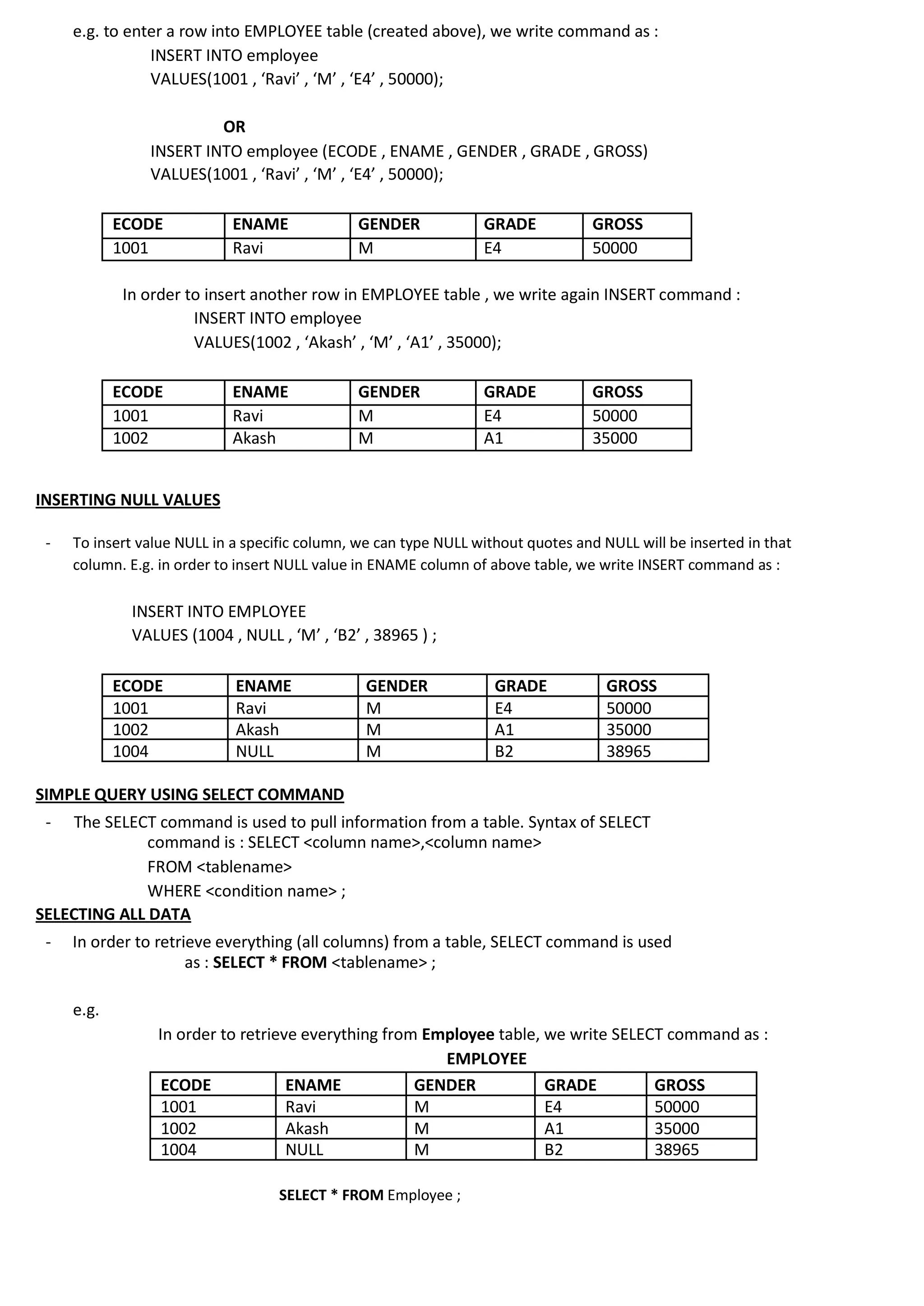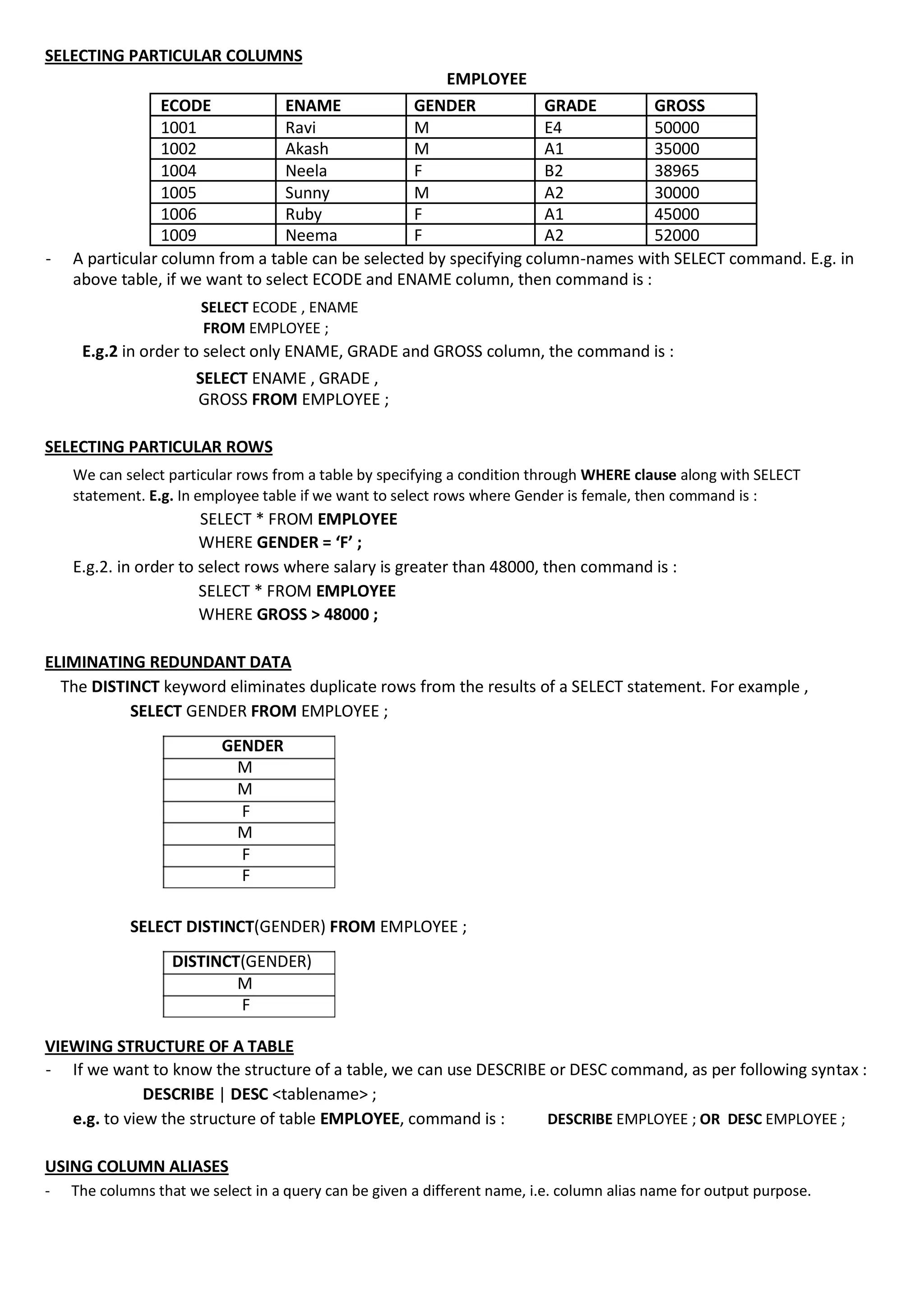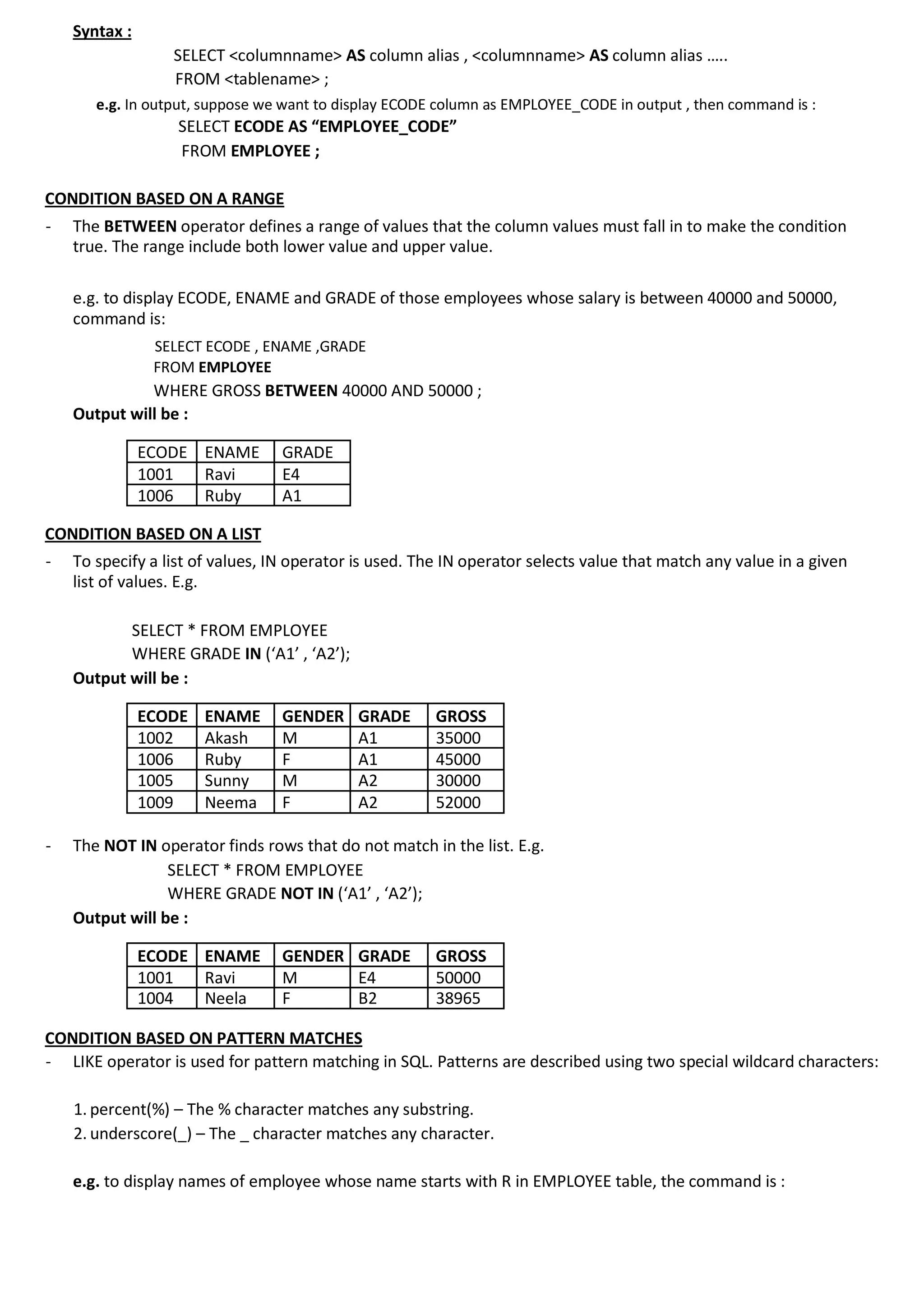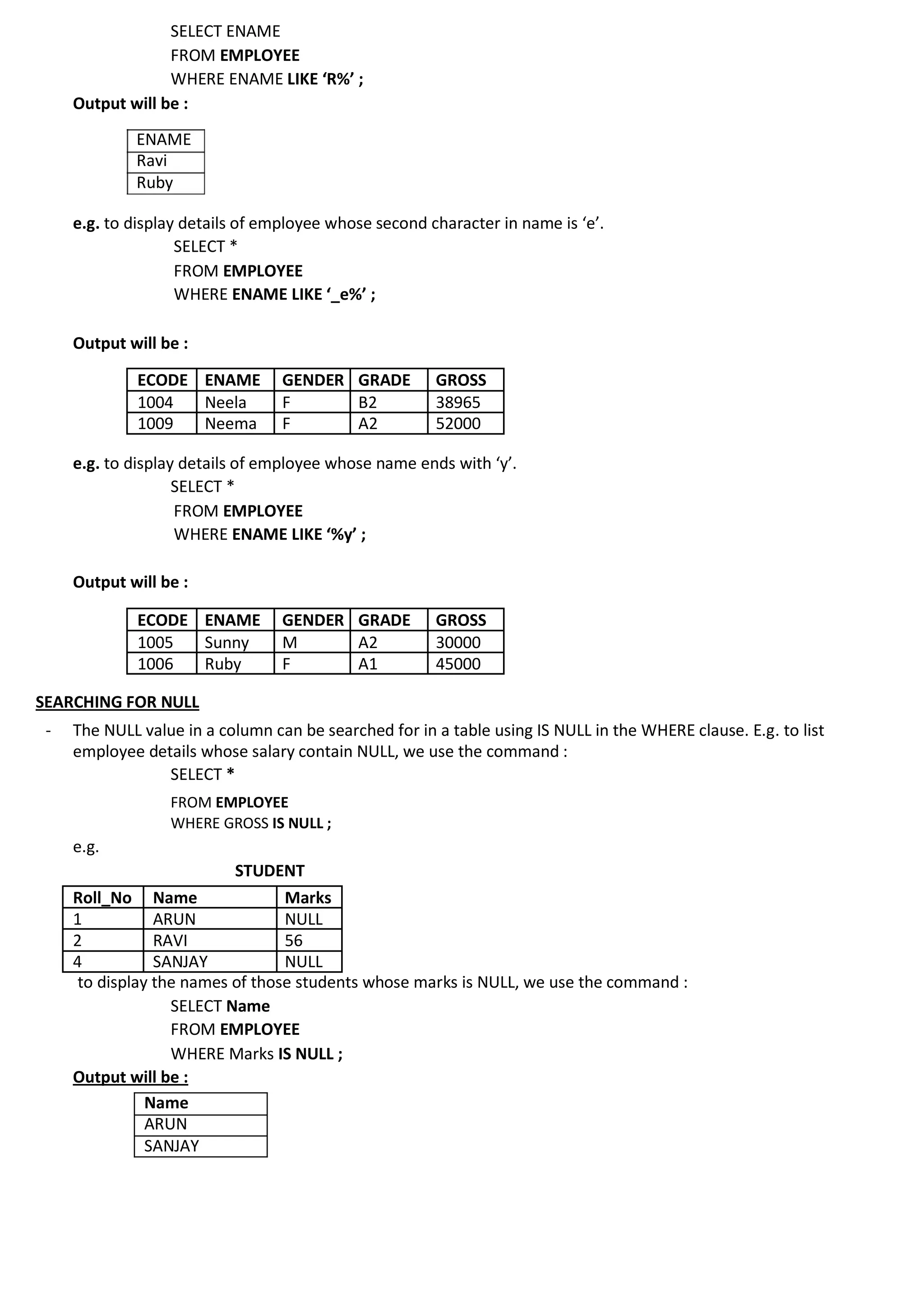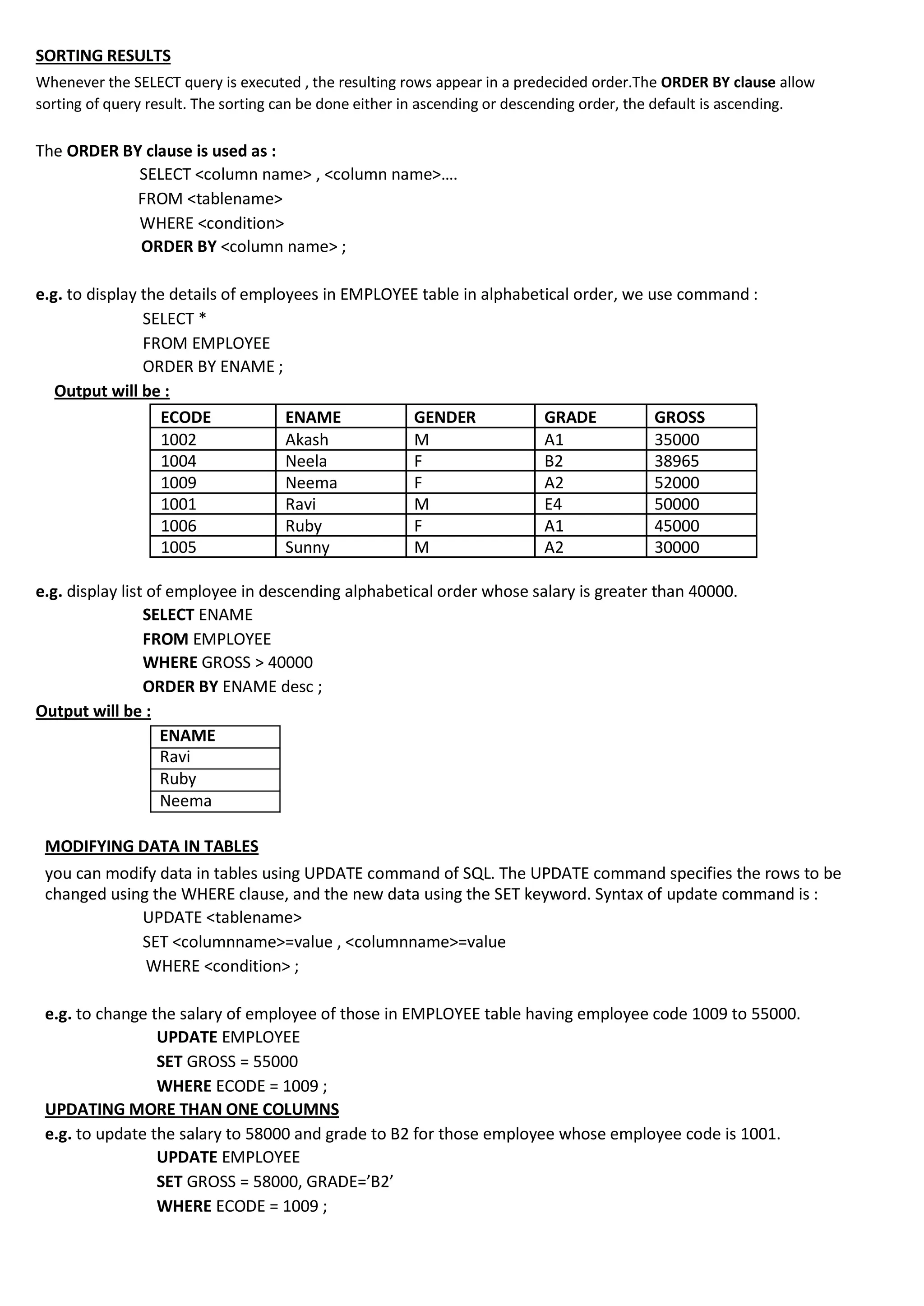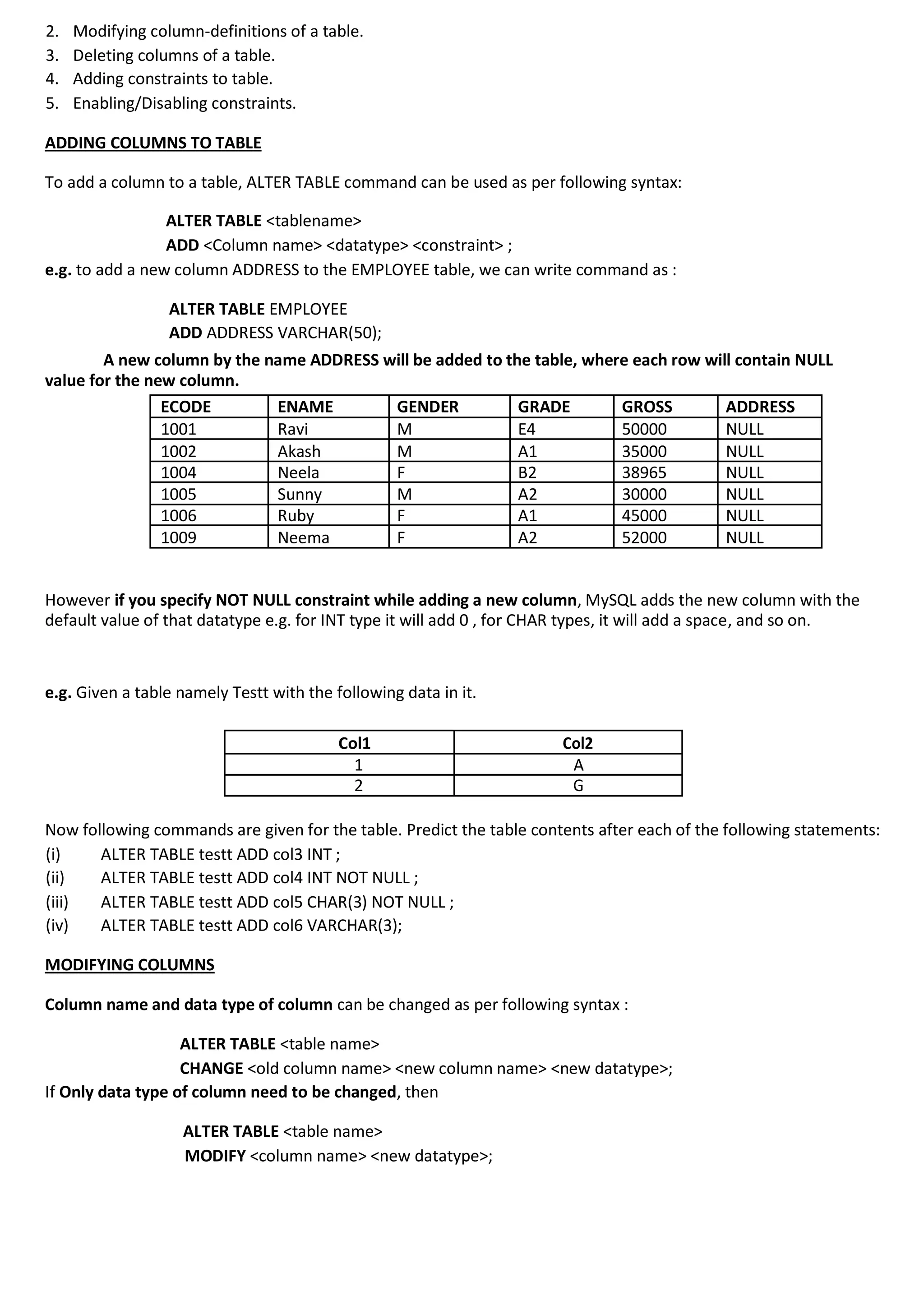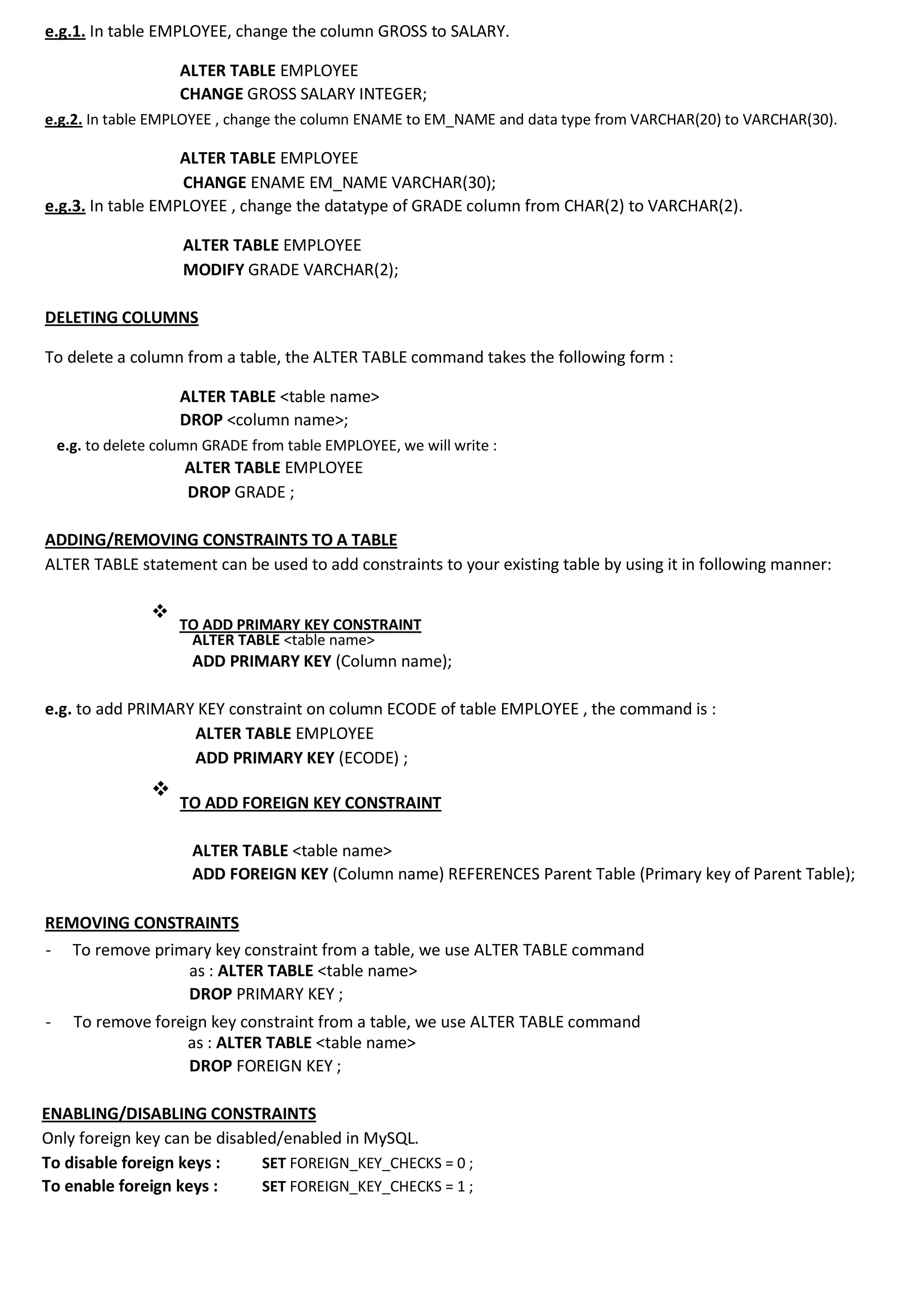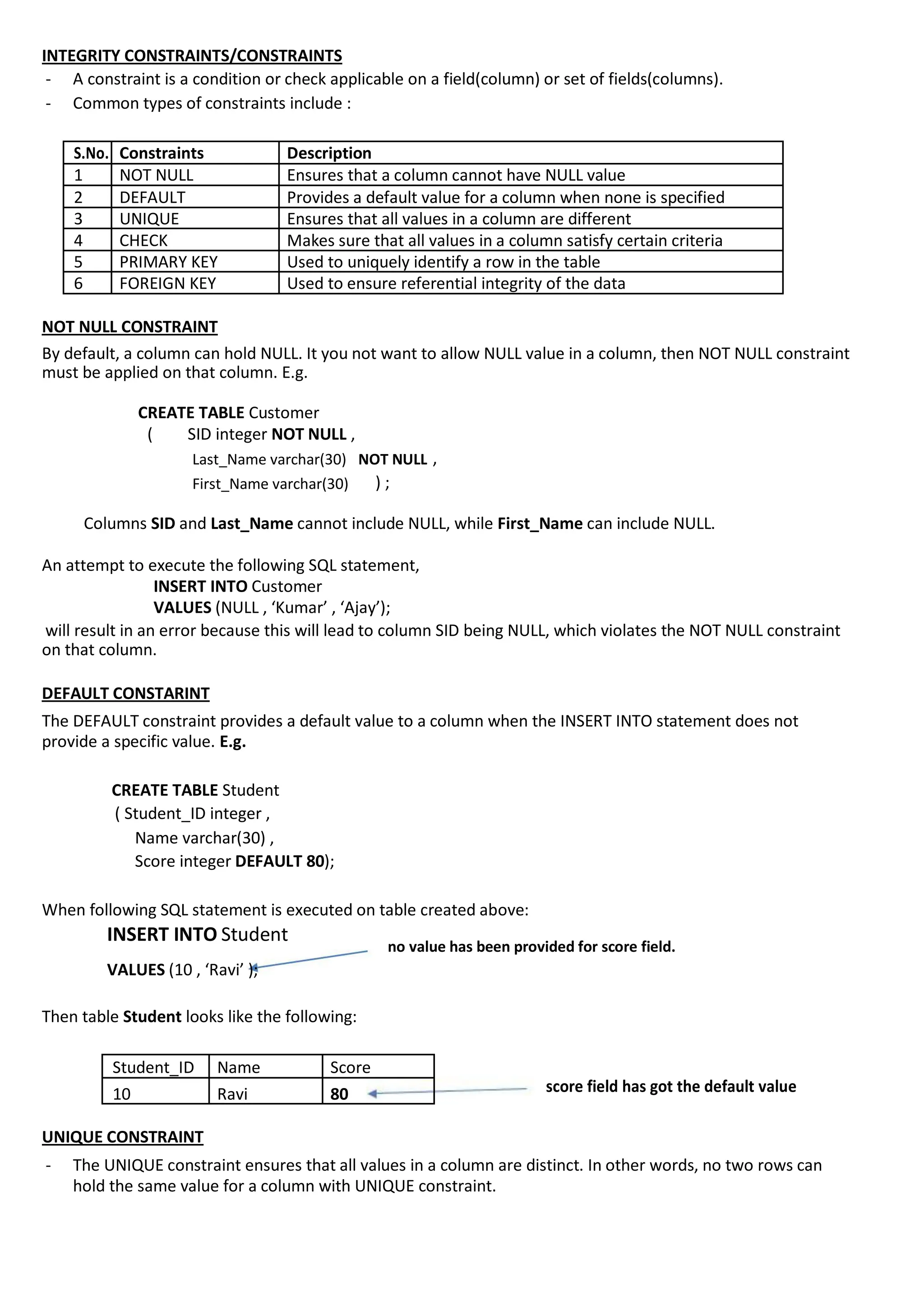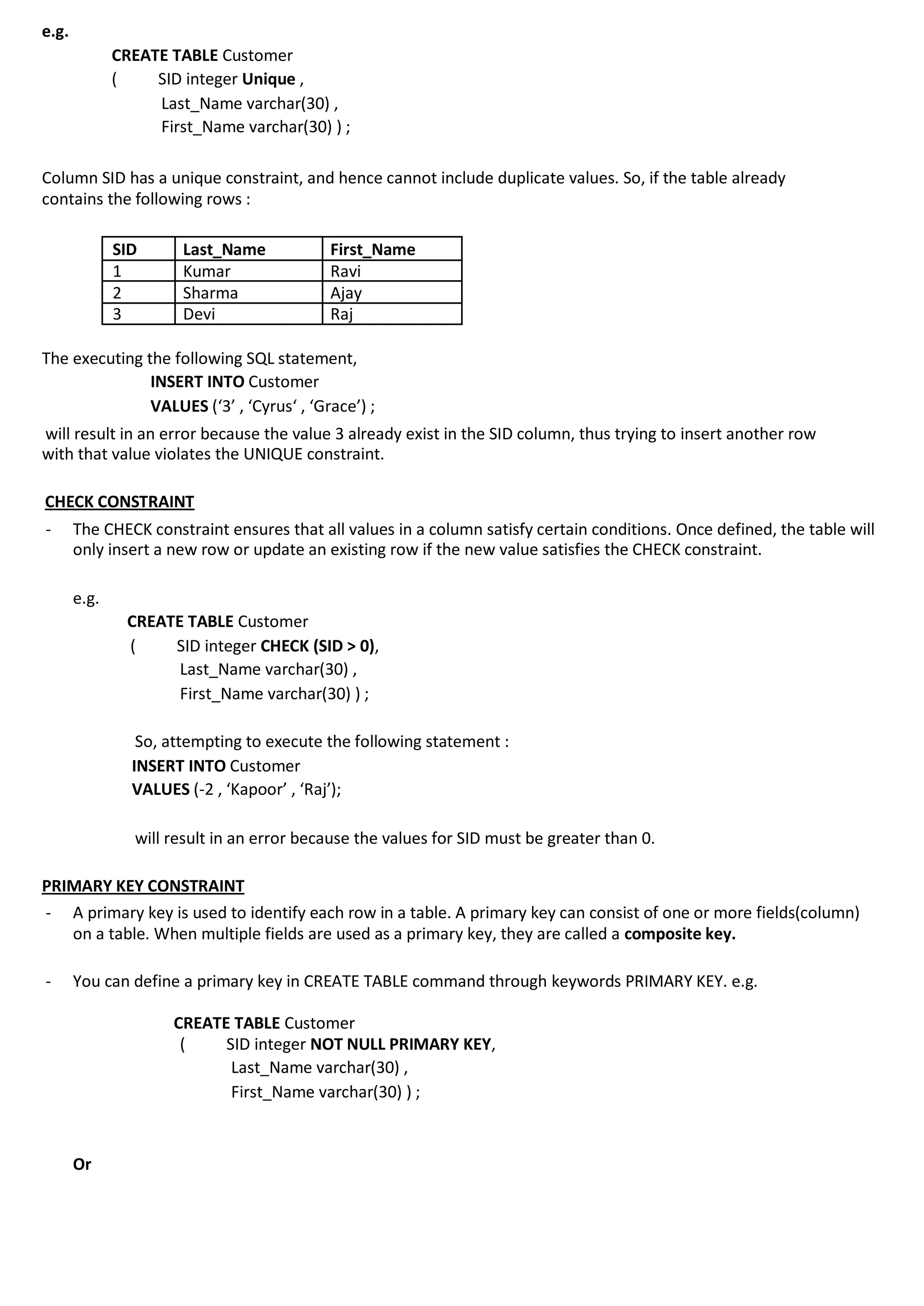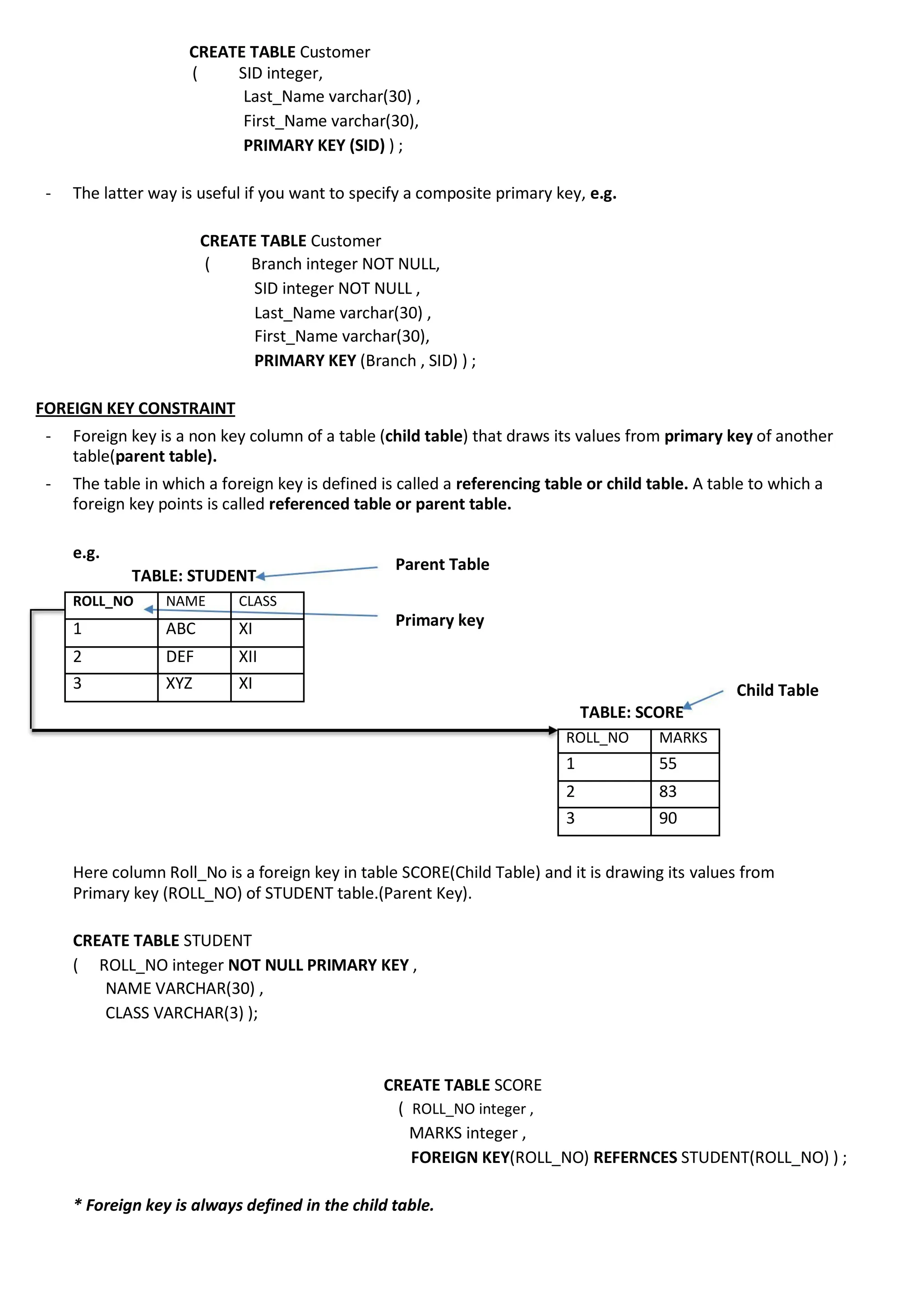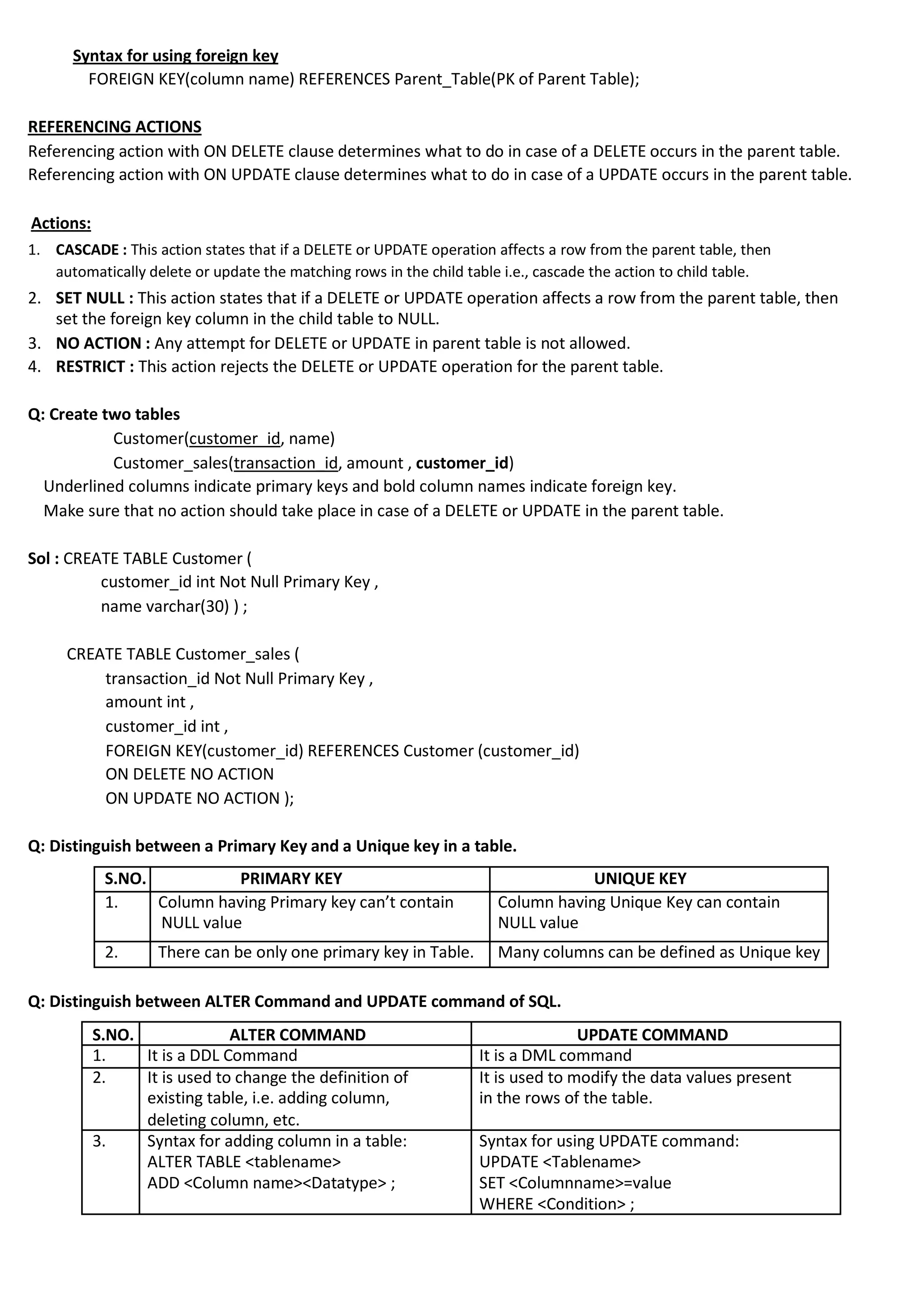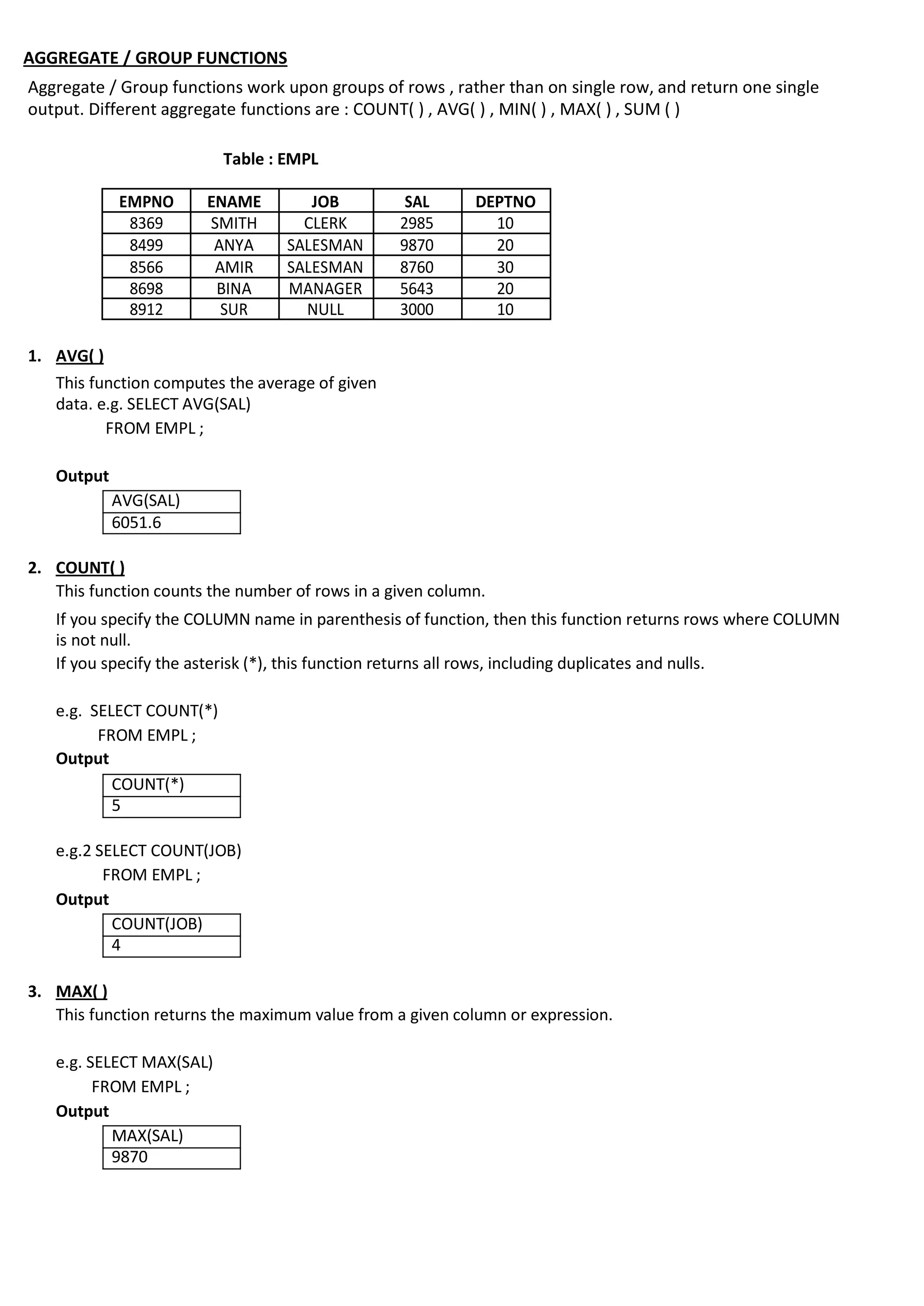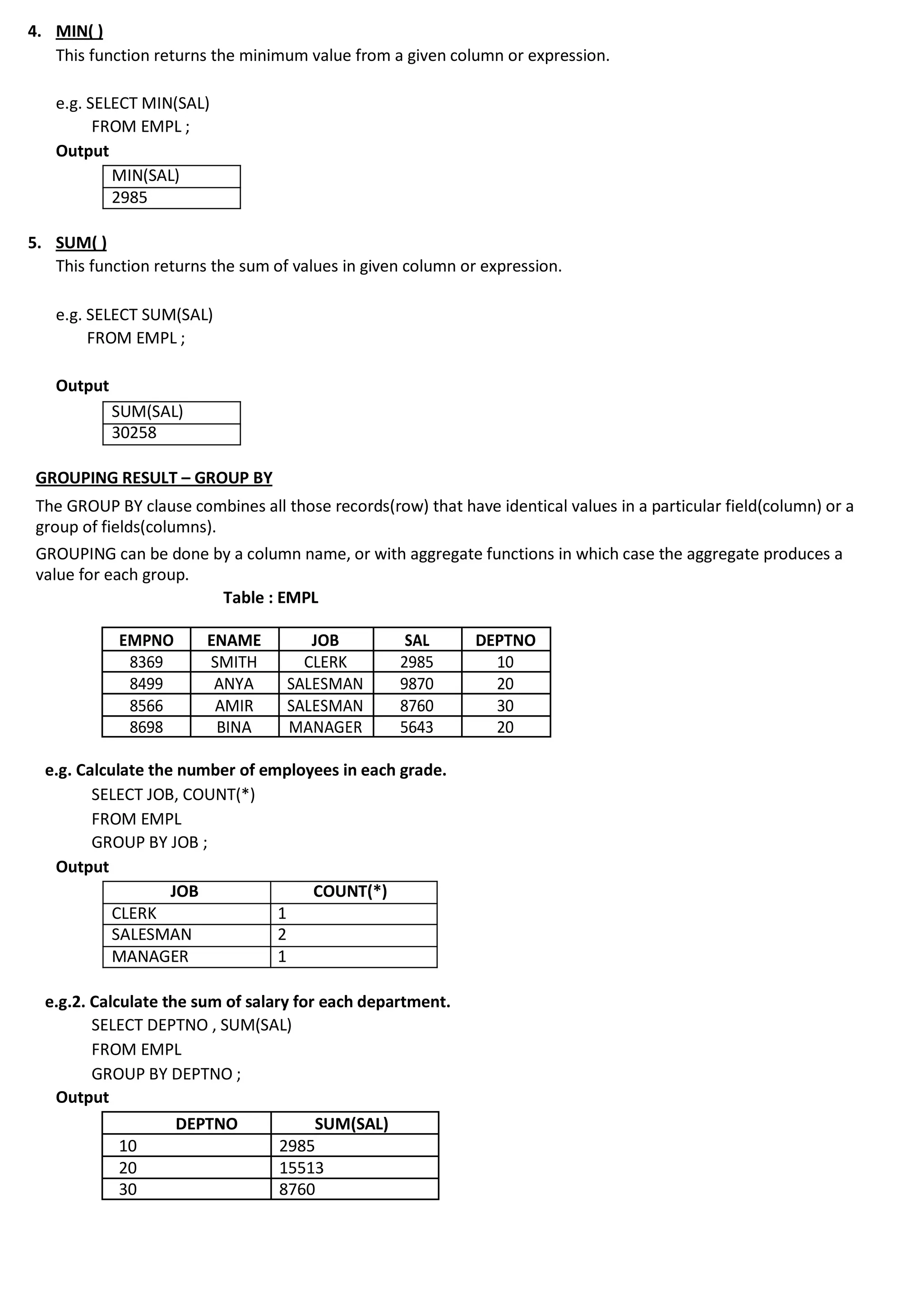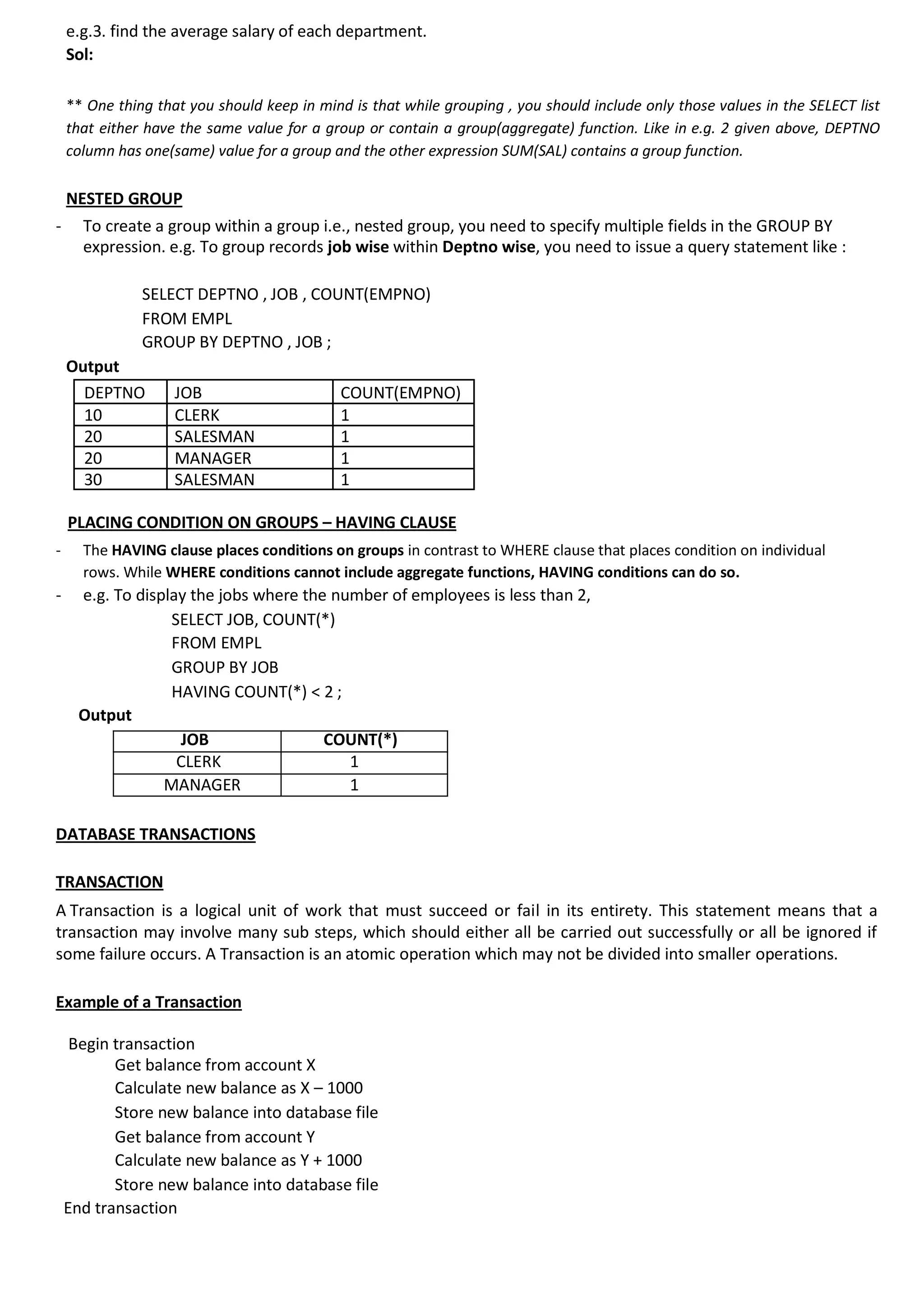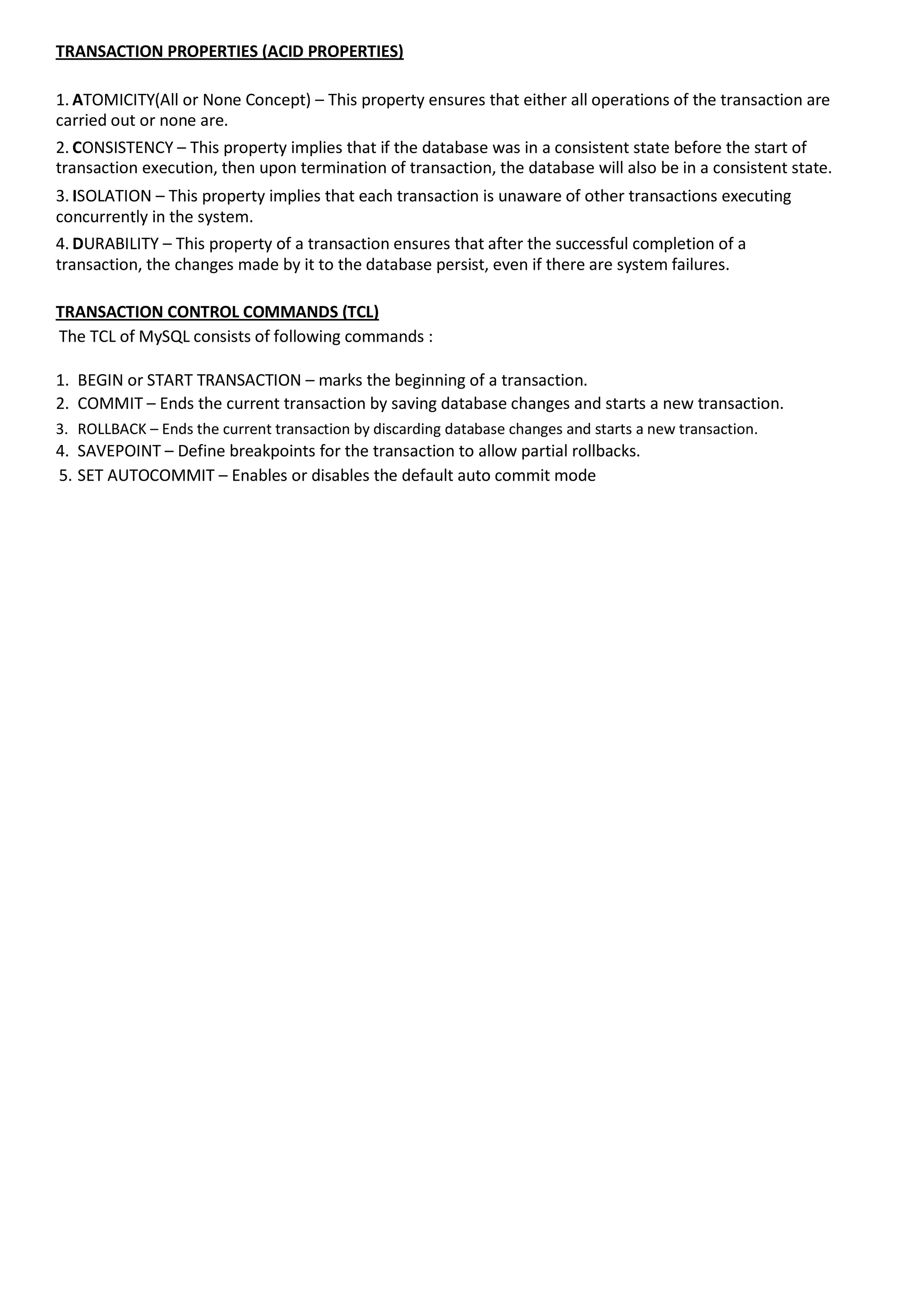The document provides comprehensive notes on MySQL and SQL, covering its structure, data types, commands, and syntax for database management. It explains key concepts such as tables, relations, data models, types of SQL statements, and various operations like data manipulation, creation, and deletion of databases and tables. Key examples illustrate how to effectively use MySQL commands for data queries, updates, and management.
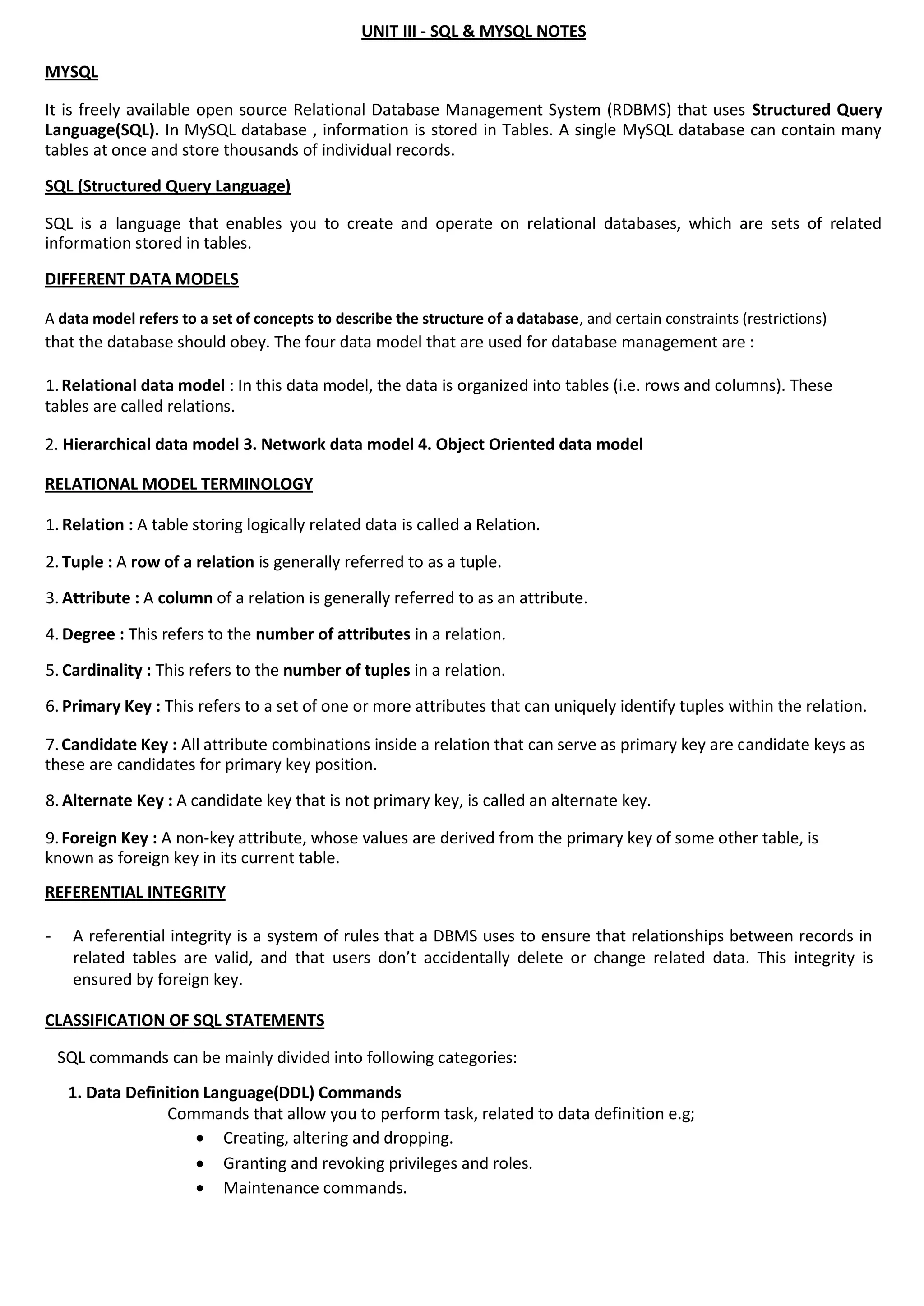
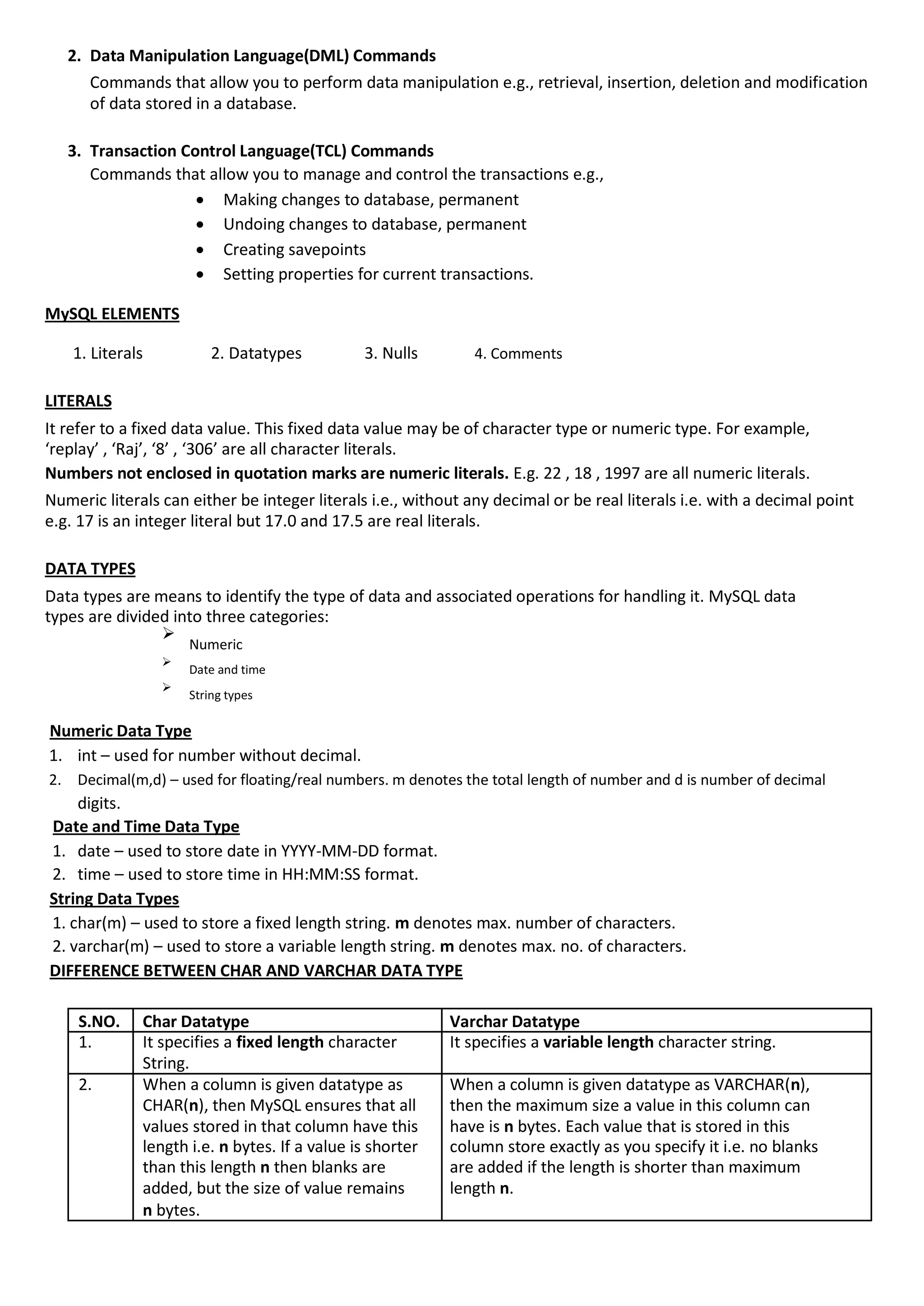
![NULL VALUE
If a column in a row has no value, then column is said to be null , or to contain a null. You should use a null value
when the actual value is not known or when a value would not be meaningful.
DATABASE COMMNADS
1. VIEW EXISTING DATABASE
To view existing database names, the command is : SHOW DATABASES ;
2. CREATING DATABASE IN MYSQL
For creating the database in MySQL, we write the following
command : CREATE DATABASE <databasename> ;
e.g. In order to create a database Student, command is :
CREATE DATABASE Student ;
3. ACCESSING DATABASE
For accessing already existing database , we write :
USE <databasename> ;
e.g. to access a database named Student , we write command as :
USE Student ;
4. DELETING DATABASE
For deleting any existing database , the command is :
DROP DATABASE <databasename> ;
e.g. to delete a database , say student, we write command
as ; DROP DATABASE Student ;
5. VIEWING TABLE IN DATABASE
In order to view tables present in currently accessed database , command is : SHOW TABLES ;
CREATING TABLES IN MYSQL
- Tables are created with the CREATE TABLE command. When a table is created, its columns are named, data
types and sizes are supplied for each column.
Syntax of CREATE TABLE command
is : CREATE TABLE <table-name>
( <column name> <data type> ,
<column name> <data type> ,
……… ) ;
E.g. in order to create table EMPLOYEE given below :
ECODE ENAME GENDER GRADE GROSS
We write the following command :
CREATE TABLE employee
( ECODE integer ,
ENAME varchar(20) ,
GENDER char(1) ,
GRADE char(2) ,
GROSS integer ) ;
INSERTING DATA INTO TABLE
- The rows are added to relations(table) using INSERT command of SQL. Syntax of
INSERT is : INSERT INTO <tablename> [<column list>]
VALUE ( <value1> , <value2> , …..) ;](https://image.slidesharecdn.com/classxii-unitiii-sqlandmysqlnotes0-240427062111-28e7da1e/75/Class-XII-UNIT-III-SQL-and-MySQL-Notes_0-pdf-3-2048.jpg)
